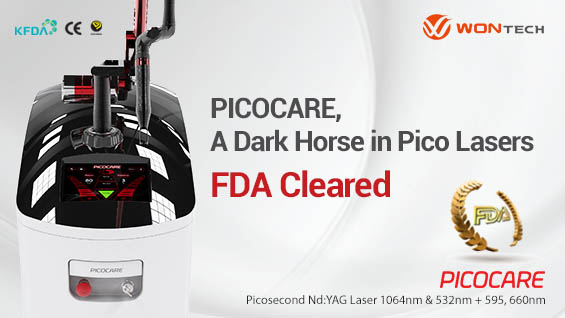.jpg)
.jpg)
Figure2a and b: Before and after one session of IPL for solar lentigines. (Courtesy of Dr. Hsuan-Hsiang Chen)
Photoaged Skin
Dr. Wen-Rou Wong et al. used a three-dimensional (3-D) culture system in which human dermal fibroblasts were cultured in contracted collagen lattices to simulate the environment of fibroblasts in real dermis and studied the effects of IPL on dermal fibroblasts cultured in 3-D collagen lattices. The PhotoDerm VL/PL system (Lumenis Ltd., Yoknem, Israel) was used to irradiate the cells, and all treatments were performed using a 570-nm cutoff filter; triple pulses of 7 ms with a pulse interval of 70 ms; and fluences of 20, 50, and 75 J/cm2. They found IPL irradiation increased the number of viable fibroblasts dose-dependently.
There was no significant change in mRNA levels of collagen I and fibronectin, but upregulated expression of collagen III and transforming growth factor (TGF)-ß1 in dermal fibroblasts was confirmed. The induction of TGF- ß1 could support subsequent neosynthesis of extracellular matrix (ECM) proteins after IPL irradiation. The increase of viable fibroblasts after IPL treatment might imply the reverse of fibroblasts to a less senescent level.
In another study, Wong and colleagues demonstrated that IPL irradiation decreased protein levels of matrix metalloproteinases (MMP)-2, especially active form MMP-2. Meanwhile, the mRNA levels of MMP-2, MMP-14, and tissue inhibitors of metalloproteinases (TIMP)-2 were also down-regulated, suggesting that IPL has multiple effects in the transcriptional and posttranslational modification for MMP-2 activity. The down-regulation of MMPs directly by IPL irradiation could diminish the destructive aspects of tissue remodeling and consequently result in the ECM accumulation.
[Advertisement] PICOCARE - Manufacturer: WONTECH(www.wtlaser.com)
Hydration
Aquaporin (AQP) 3, a member of a subgroup of the aquaporin family that transports both water and small solutes, such as glycerol, has been documented to play an important role in the skin homeostasis. AQP3 is expressed in the basal layer of keratinocytes and sebaceous glands in mammalian skin. Hairless mice lacking AQP3 exhibit reduced substratum corneum hydration and reduced skin elasticity, delayed biosynthesis of the substratum corneum, and delayed wound healing. Cheng-Jung Wu et al. examined the possible involvement of AQP3 in the functional mechanisms of IPL irradiation.
The IPL used was the Quantum SR (Luminus, Yokneam, Israel) with a cutoff wavelength set to 560 nm. Rat dorsal skin areas were irradiated at doses of 15, 25, and 35 J/cm2 for one to three sessions in 1-week interval, and analyzed for changes in histology, skin hydration, mRNA, and protein expressions of AQP3. Twice or thrice irradiation at the dose of 25 or 35 J/cm2 significantly enhanced AQP3 protein expression.
The pattern of IPL-induced increase in skin hydration was generally coincided with the expression profile of AQP3. These observations suggest that appropriate dose and number of passes of IPL are both required for the upregulation of AQP3 to occur. They also showed an unexpected but interesting finding that thicker hypodermal adipose tissue was observed in the twice- and thrice-IPL treated skin compared with the non-irradiated sites.
-To be continued





















